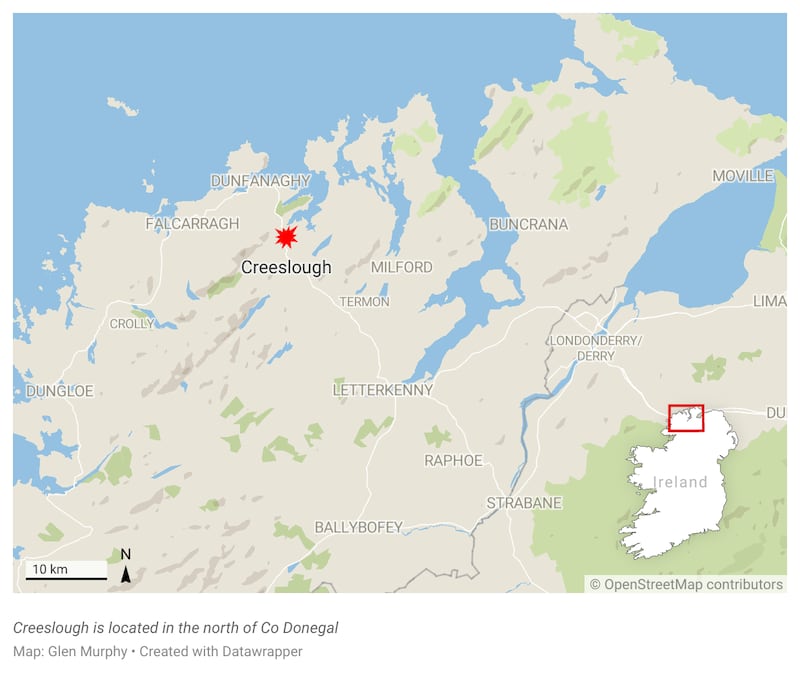The first concern of the doctor who managed the emergency medical response at Creeslough on Friday was for the locals who had immediately started pulling back rubble in an effort to rescue those buried beneath.
They were “blinded by adrenalin and by love for the people they wanted to get to”, said Dr Gerry Lane, a retired consultant in emergency medicine.
On scene by 4pm on Friday, he recalled: “The assessment I did was that we had to control the risk to the rescuers from the local community. They were the most vulnerable.
“They were in there in their flip-flops and their T-shirts, they were lifting out concrete blocks, they were lifting out metal in incredibly hazardous conditions. They saved lives but they risked their own lives to save them. I applaud them but my heart was in my mouth for those first few hours.”
READ MORE
Even a spark caused by moving metal against stone could have caused a petrol explosion at the Applegreen service station.
“We could have lost 200 people. The removal of rubble had to be done slowly, gently, hand to hand.”

Applegreen engineers were on-site on Friday and emptied petrol tanks, closing pump valves.
JJ McGowan, HSE area ambulance officer, said: “There was one local digger-driver who got into a digger at 10pm on Friday and he had to be dragged out at 8am Saturday just to give him a cup of tea. He was lifting blocks from walls so carefully. That whole wall was like a Jenga. One wrong block and the whole thing would have come tumbling down.
“Our own ambulance staff, the heroism. The fire service created a mouse-wall in the wall to try and get in behind the tills from a different angle. When I arrived at the scene I could see one of our guys, his feet and his green trousers was all we could see of him, out of the mousehole, trying to get in to see could he see anybody.”
Garry Martin, director of emergency services with Donegal County Council, said the operation was “of another level” to any other due to its complexity and “risk of further collapse”.
“There were walls cracked and one of the biggest challenges were the four reinforced concrete floors which cascaded down through the building. The force of the explosion destabilised the building to the point where there was no strength at all in it,” he said.
“We had a Donegal County Council structural engineer through the night who assisted in assessing as we went. We would be retrieving rubble from areas in phases, we’d make a risk assessment in advance to assess whether we needed to do stabilising works. We did that several times.”
He added: “At first we really didn’t know for a certain period how many people were in the building. There were employees and people doing their shopping. There was somewhere in the region of 16 apartments and we had no exact way of knowing where the residents were or whether there were visitors. By late Friday night we had a reasonable idea how many were in the building.”
Mr Martin oversaw the mobilisation of six fire brigades, with 66 personnel from stations on Falcarragh, Gweedore, Milford, Letterkenny, Stranorlar and Buncrana, as well as 20 Civil Defence personnel, with further assistance from the Northern Ireland Fire and Rescue Service in Derry.
Search dogs assisted in enabling the decision to move from a search and rescue to a search and retrieval “in the small hours of Saturday”.
Dr Lane, who was on site from 4pm on Friday to 2pm on Saturday, had “the best emergency response team” available.
“We had full intensive care facilities on scene within an hour. There were family GPs, five nurses on scene, the Northern Ireland helicopter emergency services arrived with an anaesthetist and a critical care paramedic,” he said. “We had air ambulance. Crumlin hospital was in touch to say there were beds if there were critical kids. I had helicopters on standby and open access to the hospitals in Letterkenny, Altnagelvin, Sligo.”
Dr Lane, who knew one of the deceased well, said he had worked at traumatic emergencies many times, has practised and drilled for events like that at Creeslough on Friday.
“When you’re there you have a job to do, you put aside your own emotions. But, yes, in the car on way home I cried.”










